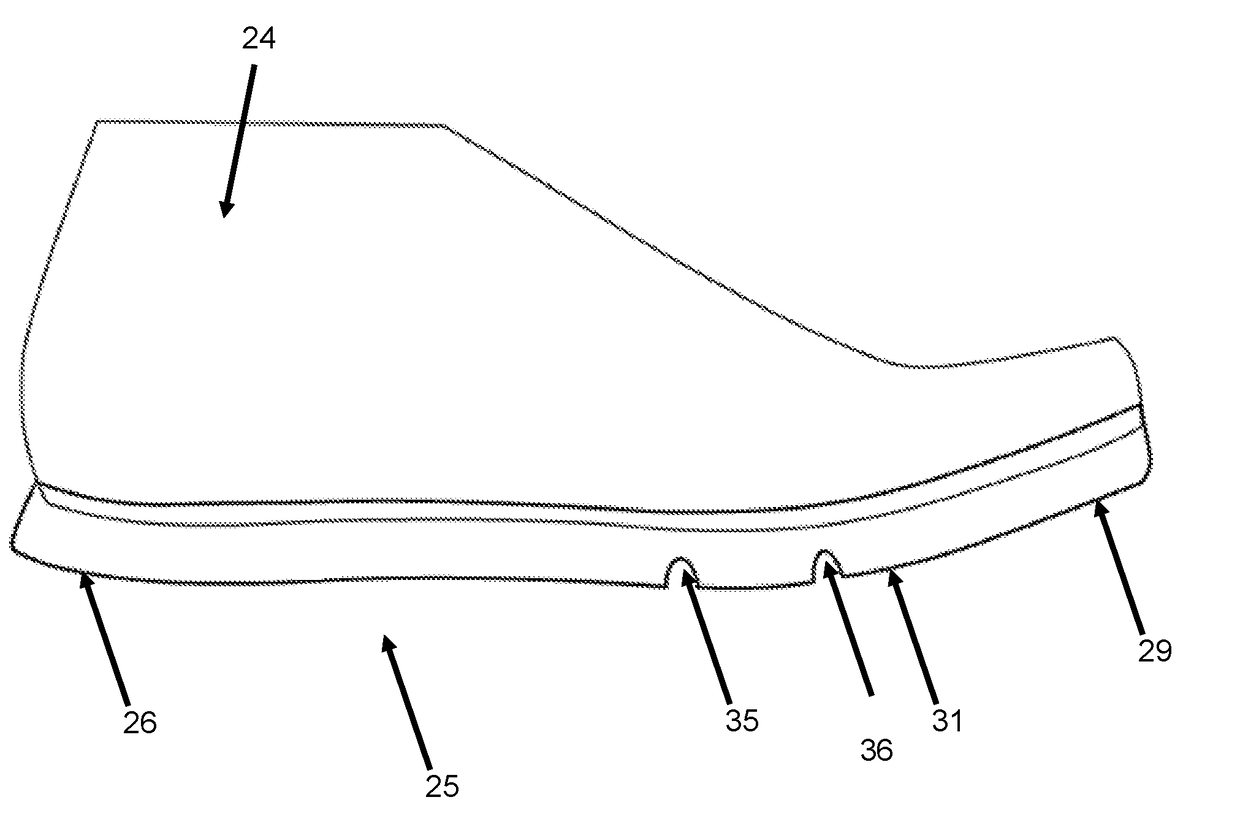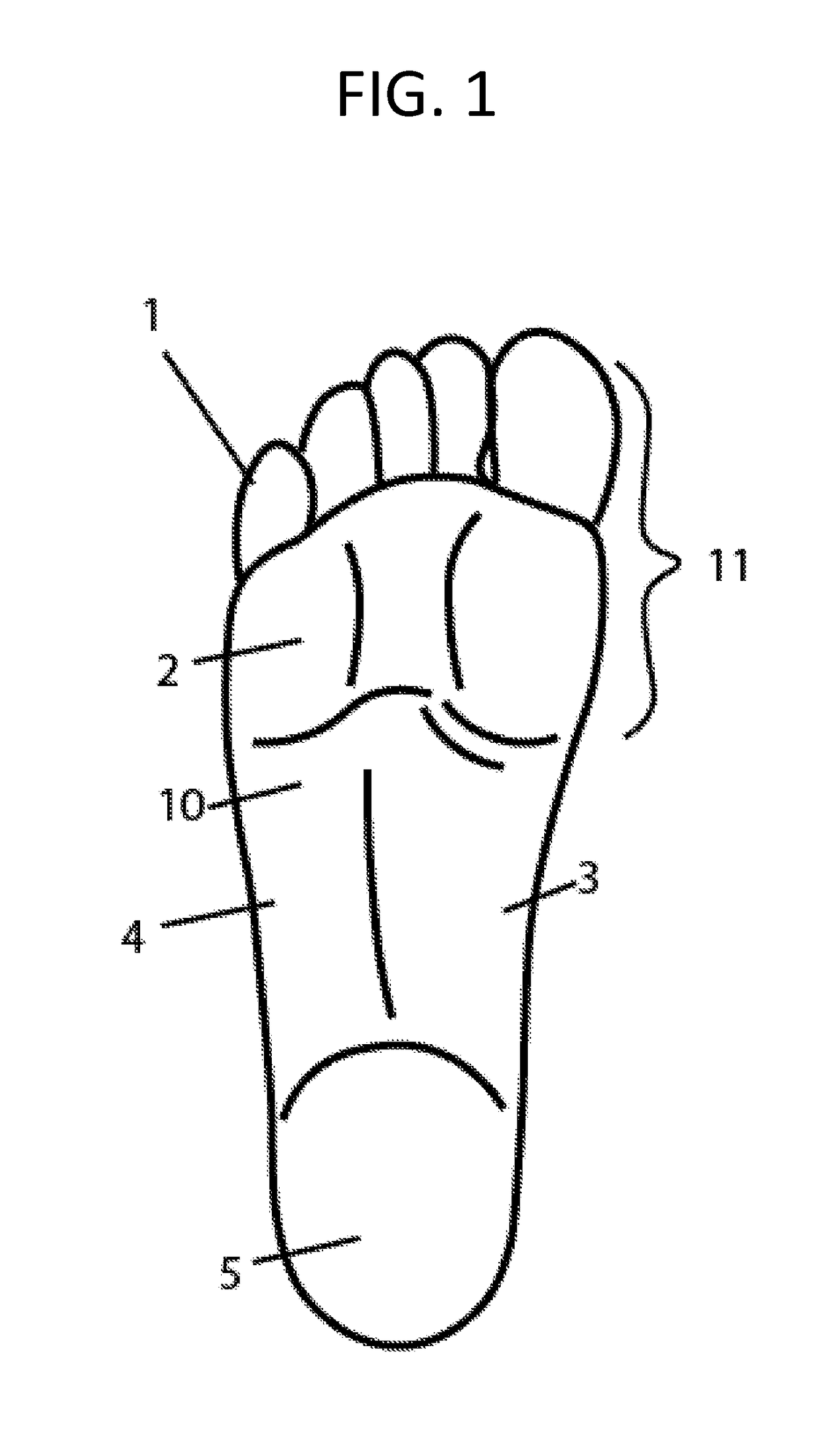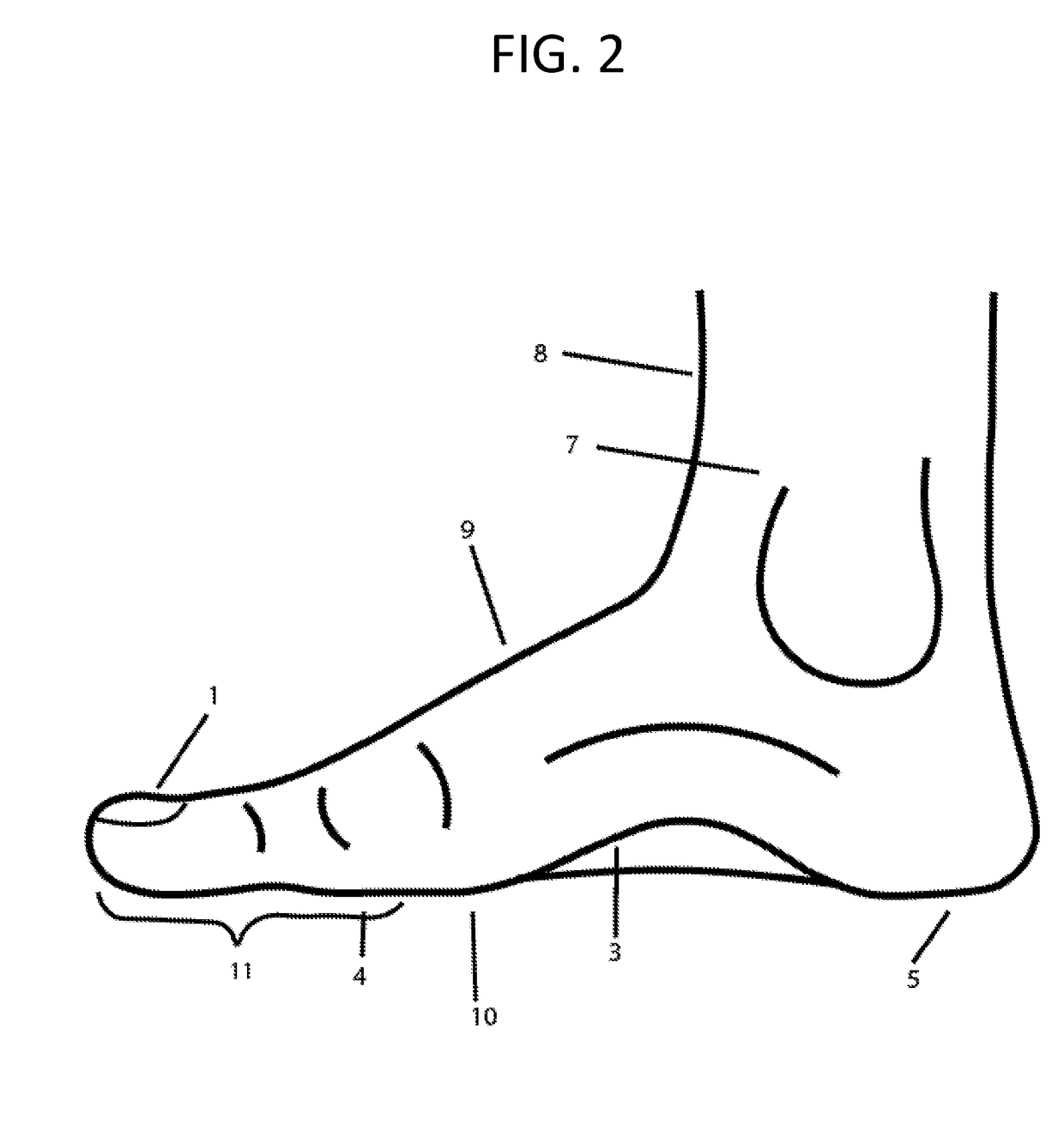Modified Shoe Permitting Forefoot Extension For Natural Supination and Pronation
a technology of forefoot extension and forefoot extension, which is applied in the field of modified shoes or shoe soles, can solve the problems of inability to adapt to the movement of the forefoot, etc., and achieves the effect of facilitating natural supination and pronation, the forefoot, and reducing the risk of injury to the forefoo
- Summary
- Abstract
- Description
- Claims
- Application Information
AI Technical Summary
Benefits of technology
Problems solved by technology
Method used
Image
Examples
Embodiment Construction
[0191]While several variations of the present invention have been illustrated by way of example in particular embodiments, it is apparent that further embodiments could be developed within the spirit and scope of the present invention, or the inventive concept thereof. However, it is to be expressly understood that such modifications and adaptations are within the spirit and scope of the present invention, and are inclusive, but not limited to the following appended claims as set forth.
[0192]The subject invention discloses modified shoe 24 that comprises a modified sole 25. In embodiments of the subject invention, the shoe 24 includes unmodified components known to those skilled in the art, such as, but not limited to a tongue, a collar, a foot opening, internal surface lining, internal padding, an Achilles tendon pad, a heel counter, eyelets and shoestring, or Velcro® attachments.
[0193]In embodiments of the subject invention, the modified sole 25 of the shoe comprises a substantial...
PUM
| Property | Measurement | Unit |
|---|---|---|
| Angle | aaaaa | aaaaa |
| Angle | aaaaa | aaaaa |
| Angle | aaaaa | aaaaa |
Abstract
Description
Claims
Application Information
 Login to View More
Login to View More - R&D
- Intellectual Property
- Life Sciences
- Materials
- Tech Scout
- Unparalleled Data Quality
- Higher Quality Content
- 60% Fewer Hallucinations
Browse by: Latest US Patents, China's latest patents, Technical Efficacy Thesaurus, Application Domain, Technology Topic, Popular Technical Reports.
© 2025 PatSnap. All rights reserved.Legal|Privacy policy|Modern Slavery Act Transparency Statement|Sitemap|About US| Contact US: help@patsnap.com



